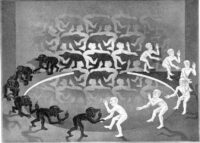For the North Bay wine country, including Sonoma, tourism has been a mixed blessing. Just one-hour’s drive from five million people looking for a weekend escape, the boom in tourism has both irrevocably altered the rural landscape with wineries, hotels and backed-up traffic and simultaneously filled the coffers of local government with valuable tax dollars.
In towns where the balance has tipped heavily towards tourism, like Yountville in the Napa Valley where the resident population is dropping while the hotel room count is rising, a sense of authenticity and genuineness has been lost. Other towns, notably Sonoma, seem to have generally succeeded by controlling growth and establishing some tenuous balance where the needs of residents retains some importance, but it’s always a challenge to keep assertive market forces with dollar signs in their eyes at bay.
There are those who believe that tourism is the perfect partner for the wine country. Their rationale usually includes the cash that falls from visitor wallets. Tourists arrive, we take their money and then send them on their way, producing a nice harvest of tax dollars for local use. I won’t say the tourists are victims, exactly, but there is a quality of “better their money than ours” at work. Another justification for letting tourism take the driver’s seat is that it’s a “greener” industry than others, that though they arrive in hydrocarbon-spewing autos, the other impacts are “soft,” like job production at hotels, wine tasting, local sales taxes in shops, and restaurants busy during the high season.
But tourism, though a “soft” industry, is deeply interconnected with the land, social fabric of community, development interests, transportation and infrastructure. Accordingly, what at first glance appears to be the perfect complement to wine county is revealed at closer inspection to be another appendage in the ever-expanding reach of a growth-fueled ethic that is systematically changing the face of the planet, and not in an entirely good way.
In exchange for tourist dollars, we pay mightily in other ways; interconnectedness, while not always highly visible, is constant. As wine county tourism grows, the lure of winery and vineyard creation increases. New wineries get planned and built and most will inevitably combine event center use with their facility. Over 25 “tasting rooms” already dot the Sonoma Plaza area; more will follow. The conversion of fallow pastures, old orchards and hillside forests to vineyards expands, and is expanding. Hotel proposal and construction, both in town and out, will increase to accommodate the rising demand of seasonal visitors. This in turn will fuel calls for increased government funding to fill empty “low season” hotel rooms. Roads suffer from wear and tear at an accelerated rate, lanes are added, pedestrian safety is reduced and pollution increases. Life in small towns like Sonoma caught in the tourism rush becomes more hurried, less genuine and noisier. In short, the costs of tourism are often diffuse, incremental and easily hidden behind the screen of easy tourist cash.
Regulation is criticized because of its “unintended” consequences, but everything, even doing “nothing,” produces unintended consequences; this is the result of being human, and not omniscient. Guided by intelligence, foresight, observation, honesty and ethics, however, we can anticipate problems and develop solutions.
To pretend that tourism is the answer to all problems and to ignore its ramifications is the real “tourist trap.”




